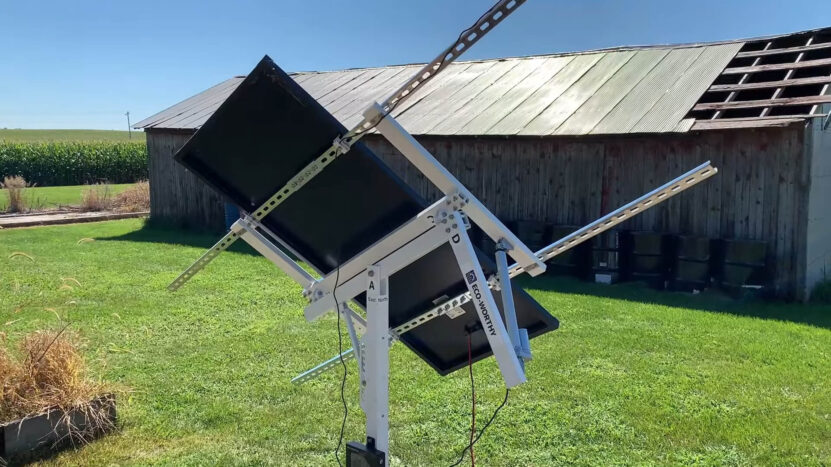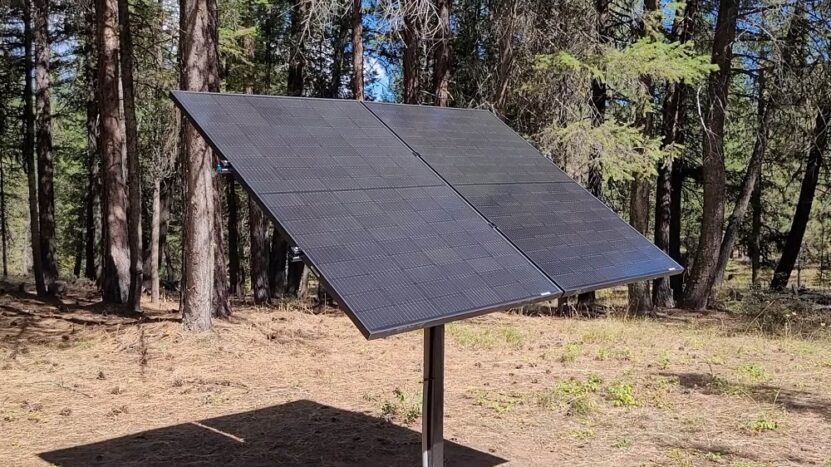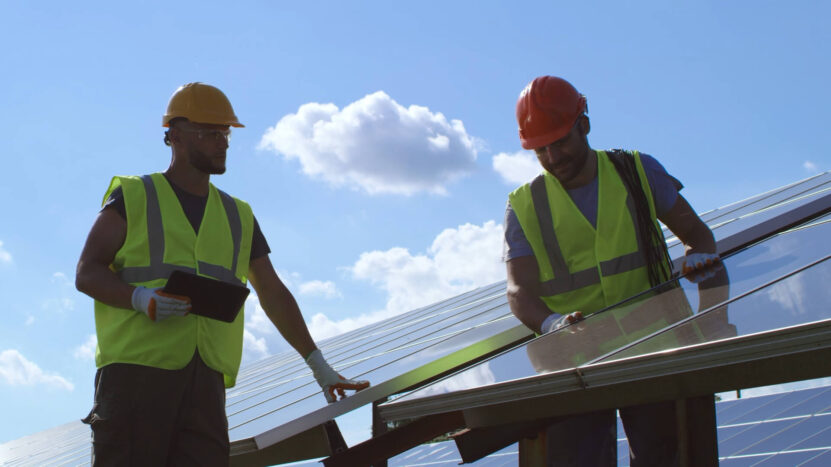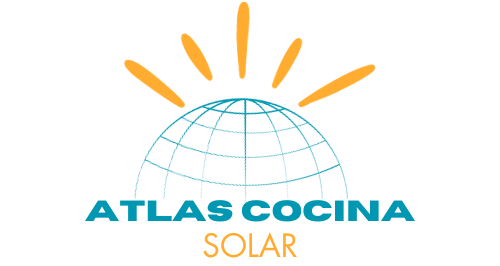Solar trackers are a smart way to boost the efficiency of any solar energy setup. By keeping solar panels aligned with the sun’s position, they capture more sunlight throughout the day.
Single-axis trackers follow the sun’s movement from east to west, while dual-axis trackers adjust in multiple directions for even better results.
Investing in solar trackers could mean a higher energy output without needing additional panels, making them a great choice for anyone looking to maximize solar power production.
Key Takeaways
- Solar trackers can increase solar panel energy production by up to 35%, enhancing system efficiency compared to fixed panels.
- Single-axis trackers move panels east to west, while dual-axis trackers offer full directional flexibility to capture sunlight all year.
- Although solar trackers cost more upfront, they reduce the number of panels required and shorten the payback period.
Boost Solar Efficiency with Trackers

| Tracker Type | Energy Output Increase | Cost (Initial Investment) | Maintenance Level |
|---|---|---|---|
| Single-Axis Tracker | Up to 30% | Higher than fixed panels | Regular maintenance |
| Dual-Axis Tracker | Up to 45% | Significantly higher | Requires more upkeep |
Solar trackers are designed to maximize the efficiency of your system by adjusting the position of panels to follow the sun.
Using trackers reduces the number of panels required to meet energy goals, making them a highly efficient solution for various installations.
Key Benefits
- Energy Output: Single-axis trackers can boost energy production by up to 30%, while dual-axis trackers can increase it by as much as 45%.
- Land Use Optimization: Fewer panels are needed, which reduces the amount of land required for installation.
- Cost Efficiency: Despite the higher initial cost, solar trackers reduce long-term costs by increasing energy output and shortening payback periods.
How Solar Trackers Work?
Solar trackers operate by aligning the panels with the sun’s path throughout the day. The two main types—single-axis and dual-axis—differ in their range of motion and the technology behind their movements.
How They Function?
- Single-Axis Trackers: These systems rotate on a single axis, typically following the sun’s east-west movement during the day. This design is straightforward and maximizes sun exposure with minimal adjustments.
- Dual-Axis Trackers: These systems move on two axes, adjusting for both daily sun movement and seasonal shifts. The additional axis allows for more precise alignment, which boosts energy capture even further.
Benefits of Automation
- Motorized Sensors: Trackers with motorized sensors continuously monitor the sun’s position, adjusting the panels to optimize energy absorption.
- Algorithm-Based Systems: More advanced trackers use algorithms and GPS coordinates to track the sun automatically, ensuring maximum exposure without manual intervention.
Choose Between Single-Axis and Dual-Axis Trackers
When deciding between single-axis and dual-axis trackers, understanding their differences is crucial. Each option offers distinct advantages depending on your energy requirements, budget, and installation space.
Movement and Control
- Single-Axis: These trackers move along one direction, adjusting panels to follow the sun’s path from east to west. They are simpler and less expensive to install, making them a popular choice for larger installations that need to cover more ground with lower costs.
- Dual-Axis: These provide more precise movement, rotating panels in all directions to perfectly align with the sun’s rays, regardless of the season. While more efficient, dual-axis systems come with a higher price tag due to their complexity.
Key Benefits
- Higher Energy Capture: Dual-axis trackers can achieve up to 45% more energy efficiency compared to static setups. Single-axis systems provide a significant boost as well, but dual-axis trackers are unmatched in energy capture throughout the year.
- Cost Considerations: Dual-axis trackers are more expensive to install but may be worth the investment in areas with limited sunlight. Single-axis trackers offer a more budget-friendly alternative for installations in sunnier regions.
Increase Energy Output with Active Solar Tracking
Active solar tracking systems stand out for their ability to dynamically adjust panel angles throughout the day. These systems rely on either motorized sensors or advanced algorithms to position the panels for optimal sun exposure.
How Active Tracking Works

- Motorized Systems: Sensors detect the sun’s position and move the panels accordingly. This real-time adjustment ensures that panels always face the sun, no matter the time of day.
- Algorithm-Based Systems: Some trackers rely on pre-programmed data like GPS coordinates to adjust panel positioning. These systems don’t require constant monitoring, making them efficient even in cloudy conditions.
Where They Shine
- High Efficiency: Active trackers can deliver a substantial increase in energy output, especially in regions with variable sunlight throughout the day. By constantly realigning, these trackers ensure that every possible ray of sunlight is captured, offering up to 45% more energy in certain conditions.
- Best Fit: Active solar tracking is ideal for projects where maximizing energy production is key, such as commercial or utility-scale solar farms. These systems can adapt to both sunny and more overcast environments, providing consistent output.
Reduce Panel Count with Solar Trackers
Solar trackers help reduce the number of panels needed by optimizing the energy production from each one. Their ability to follow the sun increases overall output without adding more panels to the installation.
Key Advantages
- Lower Panel Count: Since each panel collects more sunlight, fewer panels are required to meet energy goals. This cuts down on material costs and space needed for installations.
- More Energy in Less Space: Ideal for projects where space is limited, as fewer panels can provide the same energy as a larger fixed-tilt setup.
- Cost Savings: By reducing the need for additional panels, trackers can help save on initial setup costs while improving efficiency over time.
Optimize Solar Panel Alignment for Maximum Output

Getting the most out of your solar setup depends on how well the panels are aligned with the sun. With traditional fixed-tilt systems, panels are set at a specific angle, which limits efficiency throughout the day as the sun moves.
Solar tracking systems solve this by constantly adjusting panel positions, ensuring maximum sun exposure at all times.
Why Alignment Matters:
- Constant Adjustment: Tracking systems maintain an optimal angle throughout the day, capturing more sunlight during early morning and late afternoon hours when fixed systems miss out.
- Tailored to Location: Trackers can adjust not just for daily sun movement but also for seasonal shifts in the sun’s position, making sure panels are always aligned with the best possible angle for your location.
- Higher Energy Capture: Instead of relying on a fixed position that only works best at certain times, tracking systems optimize energy output by adjusting to the sun’s natural path.
Cut Installation Costs by Maximizing Energy Efficiency
When comparing solar trackers to fixed systems, the initial costs and payback periods are crucial factors. For a typical 5kW fixed solar system, the cost is around $15,000. Adding a single-axis tracker increases the total to $20,000, while a dual-axis tracker can drive it up to $26,000.
Cost Breakdown
- Fixed System: $15,000 (installation cost)
- Single-Axis Tracker System: $20,000
- Dual-Axis Tracker System: $26,000
Payback Period
- Fixed System: 13-14 years
- Single-Axis Tracker: 15-16 years
- Dual-Axis Tracker: Up to 19 years
Discover the Ideal Solar Tracker for Your Setup
Finding the right solar tracker depends on your installation size, budget, and energy needs. Each type offers specific advantages, but the decision often revolves around space and cost considerations.
Single-Axis Trackers
These systems are best for large-scale utility projects where space isn’t a primary concern. By following the sun from east to west, they can increase energy output by 25-35%. They are generally more affordable, with costs ranging between $500 and $1,000 per panel.
Dual-Axis Trackers
For setups where maximizing energy yield is essential, dual-axis trackers offer more flexibility by tracking the sun both horizontally and vertically. These trackers provide up to 40% energy gains but come with a higher price tag, starting at $1,500 per panel.
FAQs
How do solar trackers perform in cloudy weather?
Solar trackers still perform well in cloudy weather but may not deliver the same level of efficiency as on sunny days. They adjust to capture diffuse light, ensuring that some energy is still collected.
What is the lifespan of a solar tracker?
Solar trackers typically last around 25-30 years, similar to the lifespan of solar panels. However, maintenance is needed to ensure the moving parts continue working efficiently over time.
Do solar trackers work with all types of solar panels?
Yes, solar trackers can work with most types of solar panels, including both monocrystalline and polycrystalline panels. The key is choosing the right tracker that matches the panel system and installation needs.
Can I install a solar tracker on my roof?
Most solar trackers are designed for ground-mounted systems due to the need for movement space. Roof installations are rare but possible, though they are more complex and may require custom designs.
How much maintenance do solar trackers need?
Solar trackers need periodic maintenance to keep their motors and moving parts functioning properly. This might include lubricating parts, checking electrical connections, and ensuring that nothing obstructs the movement of the panels.
Are solar trackers good for residential use?
While solar trackers can improve energy capture, their high cost and space requirements make them less common for residential installations. They are more often used in larger, commercial, or utility-scale projects.
Last Words
Solar trackers are an effective way to increase energy output by keeping panels aligned with the sun throughout the day. With single-axis trackers providing up to 35% more efficiency and dual-axis trackers offering up to 45%, they can significantly reduce the number of panels needed for any project.
However, their upfront costs and maintenance requirements mean they are best suited for large-scale or high-efficiency setups.
